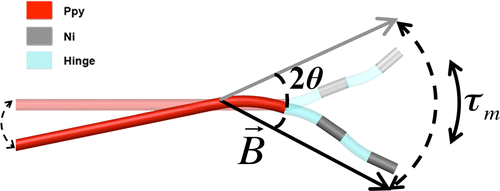Someday, treating patients with nanorobots could become standard practice to deliver medicine specifically to parts of the body affected by disease. But merely injecting drug-loaded nanoparticles might not always be enough to get them where they need to go. Now scientists are reporting in the ACS journal Nano Letters the development of new nanoswimmers that can move easily through body fluids to their targets.
Tiny robots could have many benefits for patients. For example, they could be programmed to specifically wipe out cancer cells, which would lower the risk of complications, reduce the need for invasive surgery and lead to faster recoveries. It's a burgeoning field of study with early-stage models currently in development in laboratories. But one of the challenges to making these robots work well is getting them to move through body fluids, which are like molasses to something as small as a nanorobot. Bradley J. Nelson, Salvador Pané, Yizhar Or and colleagues wanted to address this problem.
The researchers strung together three links in a chain about as long as a silk fiber is wide. One segment was a polymer, and two were magnetic, metallic nanowires. They put the tiny devices in a fluid even thicker than blood. And when they applied an oscillating magnetic field, the nanoswimmer moved in an S-like, undulatory motion at the speed of nearly one body length per second. The magnetic field also can direct the swimmers to reach targets.
More information: Undulatory Locomotion of Magnetic Multilink Nanoswimmers Nano Lett., Article ASAP, DOI: 10.1021/acs.nanolett.5b01981
Abstract
Micro- and nanorobots operating in low Reynolds number fluid environments require specialized swimming strategies for efficient locomotion. Prior research has focused on designs mimicking the rotary corkscrew motion of bacterial flagella or the planar beating motion of eukaryotic flagella. These biologically inspired designs are typically of uniform construction along their flagellar axis. This work demonstrates for the first time planar undulations of composite multilink nanowire-based chains (diameter 200 nm) induced by a planar-oscillating magnetic field. Those chains comprise an elastic eukaryote-like polypyrrole tail and rigid magnetic nickel links connected by flexible polymer bilayer hinges. The multilink design exhibits a high swimming efficiency. Furthermore, the manufacturing process enables tuning the geometrical and material properties to specific applications.
Journal information: Nano Letters
Provided by American Chemical Society


.jpg)





















